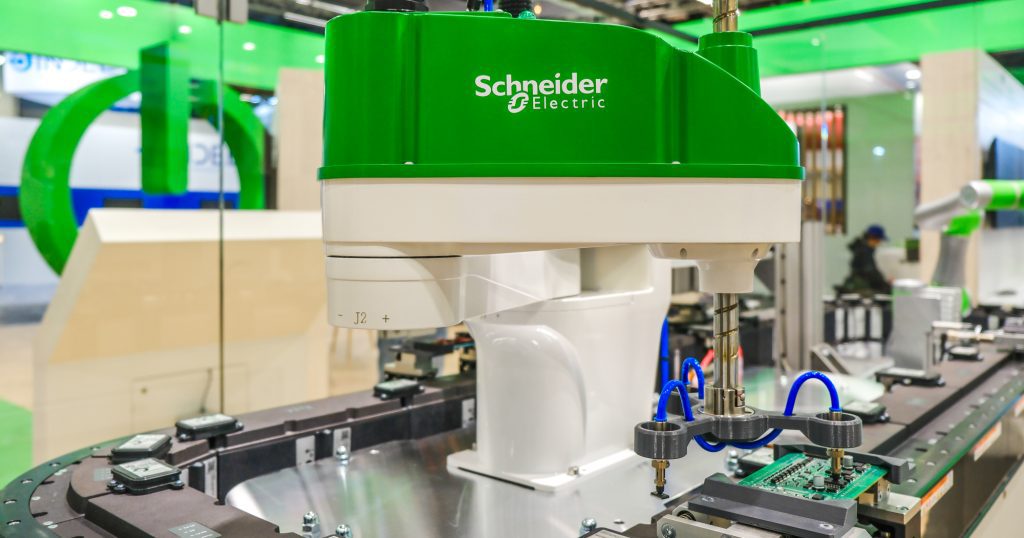
With artificial intelligence advancing at an astonishing rate, keen investors are putting their money into the infrastructure that supports these new technologies. We only need to look at the soaring success of companies like NVIDIA to see that digital commodities such as semi-conductors (and the components used to create these) are in huge demand. In fact, the chip industry alone is expected to become a trillion-dollar industry by 2030.
But with these amazing innovations come new challenges.
Due to the rise in consumer demand for electronics and the short life cycles of products, e-waste has become one of the fastest-growing waste streams globally.
E-waste holds large volumes of finite, valuable raw materials, including gold, palladium, silver, iron, copper, and rare earth minerals. However, according to Statista, just 22.3 percent of the e-waste generated worldwide, or roughly 14 million metric tons, was documented as collected and properly recycled in 2022. And while e-waste generation has nearly doubled since 2010, the amount collected for recycling only grew by 70 percent in the same period.
With e-waste generation forecast to exceed 80 million metric tons by 2030, improved recycling and recovery infrastructure is critical for sustainability.
Surprisingly, integrated robotics solutions, such as the combination of cobot, SCARA, digital twin, and multicarrier, now play a key part in helping to make the digital era more sustainable by increasing the circularity of the electronics supply chain.
Using robotics, automation, and AI to recover and reuse microchips
Enter Desoltik: an innovative start-up that is revolutionizing the electronics industry through the sustainable reuse of microchips recovered from used circuit boards.
The company came about because of a student project at KIT, Germany, aiming to give microchips, that were often becoming e-waste long before their shelf life was over, a second life. The company mission – to make the electronics industry more sustainable – closely aligns with our commitment to sustainability and circularity at Schneider Electric. And so, a strong partnership was born.
The team at Desoltik believed there was a better way to desolder functioning microchips from used printed circuit boards and feed them back into the material cycle. Existing processes were manual, inaccurate, time-consuming, and unfortunately, very costly due to the need for a customized machine to remove each different type of chip from the numerous circuit boards available on the market.
Via the clever integration of automation technology, artificial intelligence, and robotics, Desoltik, in collaboration with Schneider Electric and the wbk Institute of Production Science, has created an exceptional solution that can deal with different types of chips and boards in one machine. Making all of this fully automated yet flexible and economically viable was a challenge, but the outcome has been quite a success thanks to the integration and automation of digital technologies.
The flexible transport system includes AI-based visual recognition to locate and identify the chips, assessing their type and suitability. Then the integrated robotics solution, including Schneider Electric’s Lexium Cobot, Lexium MC12 Multicarrier, and Lexium STS SCARA, takes care of carefully desoldering the chip and removing it from the circuit board
Extending the lifespan of the microchips not only reduces the e-waste of valuable materials, but pressure on the electronics supply chain is reduced, carbon footprint and costs are lowered, and the sustainability and circularity of the electronics industry is increased.
Moving towards a more sustainable, circular future in Industry
The digital era is here to stay, and embracing digitalization is no longer a choice. With developments in technology moving at such an astonishing rate, so to must we, if we are to minimise the impact of these advances, maximise their use to help counteract e-waste issues, and ensure that our planet’s resources are responsibly used and reused, for many years to come.
The Desoltik success story provides a fantastic example of how the combination of a great idea, an innovative team, and new technologies such as AI and integrated robotics solutions can come together to contribute to increased sustainability, reduced e-waste, and boost the all-important shift toward circularity within the electronics industry and beyond.
Ready to harness the power of Integrated Robotic solutions?
- Get more information on Schneider Electric’s robotics solutions
- Watch Schneider Electric’s Integrated Robotics YouTube video
- Access Schneider Electric’s Robotics e-guide
- Download the IDC Paper: The Rapid Pace of Industrial Robotic Integration
- Find out more about our partnership with Desoltik on LinkedIn



Add a comment